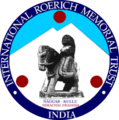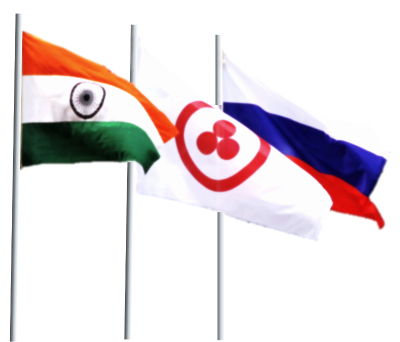IRMT Collection
The Himalayan Estate of the Roerichs forms a unique part of the overall heritage of the great Russian family. They stayed here for almost 20 years, from 1928 to 1947, and every square inch of this blessed land whether the park, the orchard, the Memorial House, the premises of “Urusvati” Institute or the works of art and household items bear the imprint of their sublime spiritual energies, noble ideas and high aspirations. The Roerichs’ heritage has a timeless historical, memorial, artistic and spiritual significance and should be carefully preserved.
The collection of the International Roerich Memorial Trust comprises the following categories of museum items:
1. Magnificent paintings of the Himalayan Series by Nicholas K. Roerich and excellent paintings by his younger son Svetoslav Roerich.
2. Pieces of art collected by the Roerichs in the Himalayan region and brought from various parts of India and abroad: Himalayan and South Indian bronzes, Tibetan sculpture (including the images of the Buddha and Tsong Khapa from the George Roerich’s Study), South Indian religious paintings, carved wooden panels in Burmese style and items from Manchuria and China. The specimens of traditional art of the Kullu valley include the stone images of Indian deities, carved temple gates, and the metal masks of Surya, Krishna and Radha.
3. Personal belongings and household items: pieces of furniture, kerosene lamps, oil stoves, boxes, crockery, cutlery and napkins that still remember their owners’ gentle touch.
4. Pieces of rock crystal. Some of them are kept in the Roerich House, the others form part of the “Urusvati” Himalayan Research Institute collection.
5. Some pieces of science laboratory equipment used by “Urusvati” Himalayan Research Institute including tripods, glass flasks, retorts and coolers that may have been used as part of chemical equipment to produce oils of medicinal plants.
6. Natural science collections of “Urusvati” Himalayan Research Institute: ornithological and mineralogical collections, herbariums, archeological finds and fossils. Pharmacological collection.
7. Ethnographic collection of “Urusvati” Institute including weapons of various kinds collected by George Roerich. Its antique spears, leather shields, bows and arrows are of considerable scientific value.
8. Travel, rock climbing and archeological equipment used by the Roerichs during the Central Asian Expedition and the expeditions organized by “Urusvati” Institute.
9. The IRMT Archive comprising photographs, letters, housekeeping documents and expedition maps forms an important part of the Roerichs’ heritage. The archives preserve the letters related to the structure of “Urusvati” Institute and the promotion of the Roerich Pact, and the correspondence between the Roerichs and their American associates. The preserved card index of linguistic, historical and ethnographic data testifies to the wide range of academic interests and the meticulous work of its creator, George Roerich.
10. The IRMT Memorial Library contains the Living Ethics editions in various languages, books on different branches of knowledge, Sanskrit and Tibetan manuscripts, magazines, brochures, issues of the Journal of “Urusvati” Himalayan Research Institute, monographs and separate publications on and by the Roerichs in English, Russian, Hindi, German, French and other languages. A considerable number of articles were published in the Indian and foreign mass media in 1920-1940ss.
11. The IRMT also possesses an impressive collection of contemporary art presented to it by the artists from India, Russia and other countries.
12. Besides, the IRMT owns a collection of the Himalayan folk art and household items, which was started by the Roerichs and continues to grow at present.










